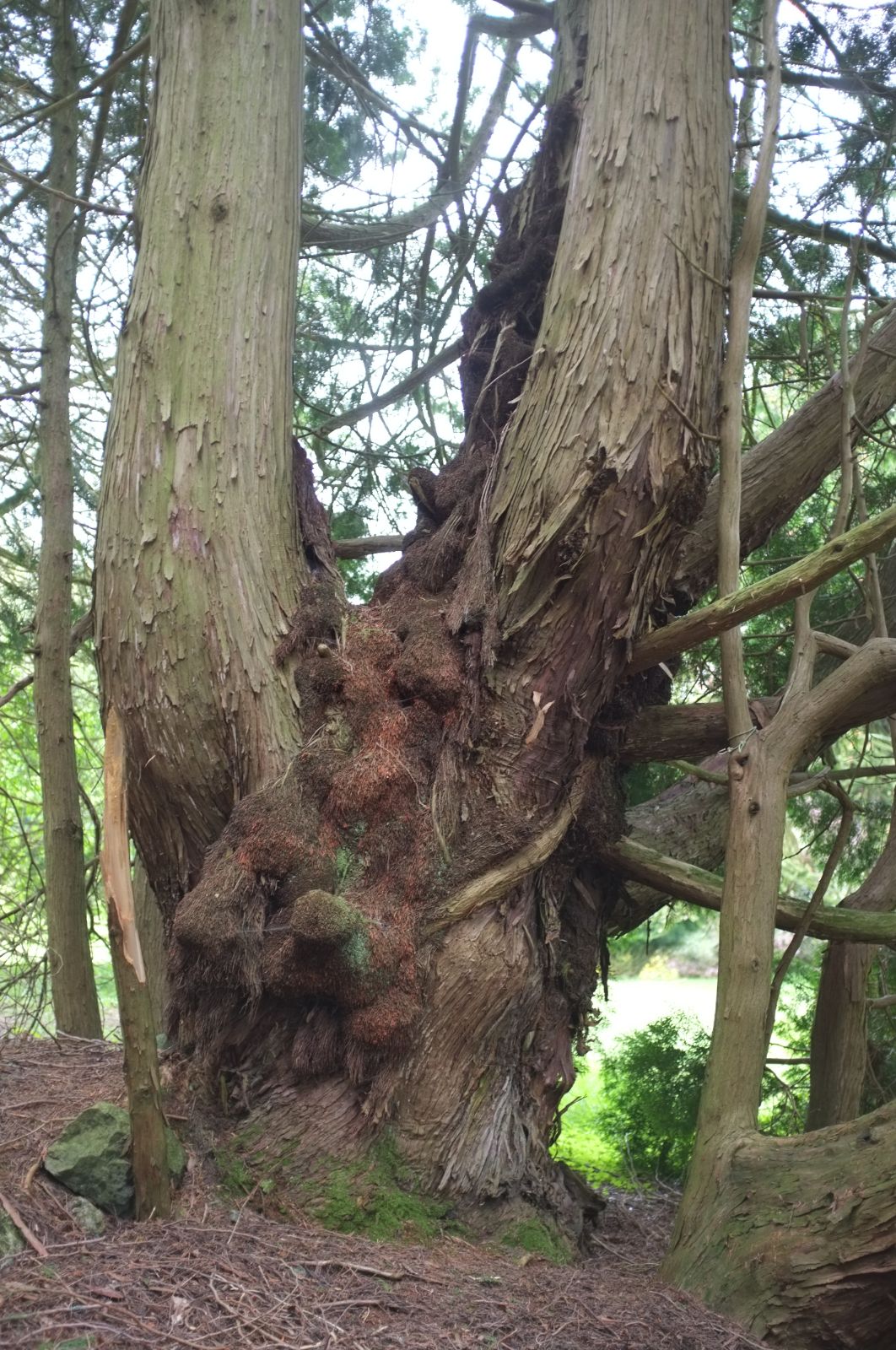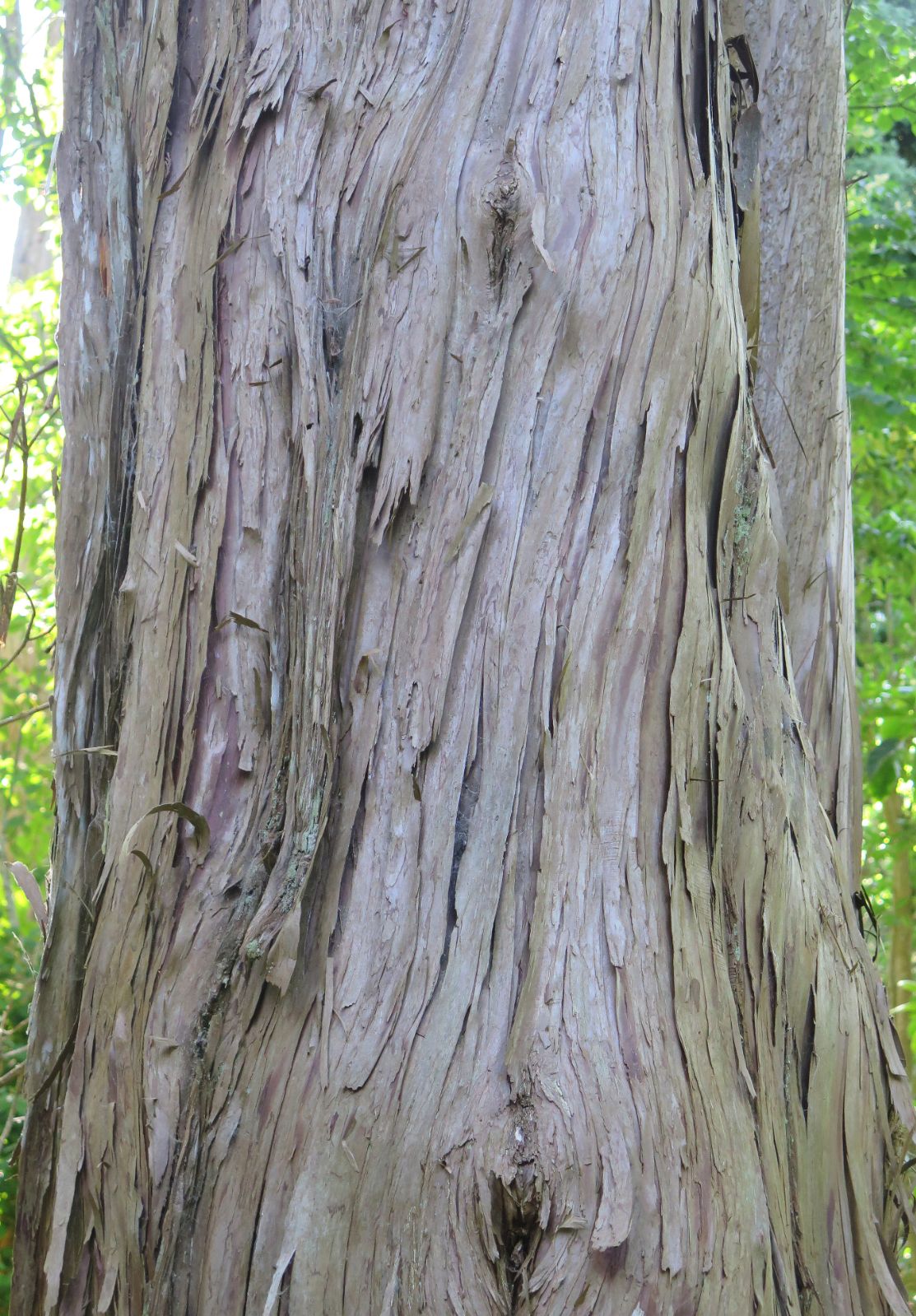Thuja standishii
Credits
Article from Bean's Trees and Shrubs Hardy in the British Isles
Recommended citation
'Thuja standishii' from the website Trees and Shrubs Online (treesandshrubsonline.
Genus
Synonyms
- Thujopsis standishii Gord.
- Thuja japonica Maxim.
Editorial Note
W.J. Bean discussed Thuja koraiensis in a footnote to his article on T. standishii. For ease of reference, we have moved Bean’s account of that species to its own article, which includes text from New Trees.
TC, February 2024.
A tree up to 100 ft high in Japan, with a slender trunk and a shaggy, deep red bark; branches horizontal, curved upwards at the ends; leaf-sprays arching downwards, their ultimate subdivisions about 1⁄10 in. wide. Leaves scale-like, about 1⁄8 in. long, the lateral pairs with their edges turned inwards and clasping the flatter ones above and below the twig, blunt, thickened and incurved towards the apex, rather pale yellowish green on the upper side of the twig, glaucous on the lower side, except at the points. Cones oblong, 3⁄8 in. long, composed of about ten broadly oval, overlapping scales, only two pairs of which bear seeds.
Native of Japan, in the mountains of Honshu and Shikoku; introduced by Fortune for Standish of Bagshot in 1860–1. Fortune only saw it as a cultivated tree about Tokyo, and one of the first Europeans to see it growing wild was the Veitchian collector Maries, who gathered specimens in 1878 in the mountains of Honshu. This species has the most open branching of the cultivated species, and in its coarse branchlets it resembles Thujopsis dolabrata.
Examples measured recently are: Kew, pl. 1895, 38 × 31⁄4 ft (1965); National Pinetum, Bedgebury, pl. 1926, 30 × 3 ft (1970); Leonardslee, Sussex, one of three, 51 × 43⁄4 ft (1969); Linton Park, Kent, pl. 1866, 67 × 71⁄2 ft (1970); Little Hall, Kent, pl. 1906, 51 × 5 ft (1973); Longleat, Wilts, 54 × 61⁄4 ft (1971); Westonbirt, Glos., pl. 1875, 63 × 4 ft (1971); Trentham Park, Notts, 60 × 41⁄4 ft (1968); Powerscourt, Co. Wicklow, Eire, 56 × 81⁄2 ft (1975); Inistioge, Co. Kilkenny, Eire, 55 × 81⁄2 ft (1975).
From the Supplement (Vol. V)
specimens: Kew, pl. 1895, 42 × 41⁄4 ft and 50 × 31⁄4 ft (1980); National Pinetum, Bedgebury, Kent, pl. 1926, 40 × 41⁄4 ft (1983); Linton Park, Kent, pl. 1866, 72 × 8 ft (1985); St Clere, Kent, pl. c. 1905, 42 × 61⁄4 ft (1983); Benenden School, Kent, Garden, 72 × 91⁄4 ft (1979); Little Hall, Canterbury, Kent, pl. 1906, the tree mentioned not measured since 1973, another 60 × 41⁄2 ft (1984); Westonbirt, Glos., pl. 1875, 63 × 4 ft (1971); Tregrehan, Cornwall, 77 × 7 ft (1979); Patterdale Hall, Westm., 60 × 10 ft at 3 ft (1985); Coed Coch, Clwyd, 66 × 83⁄4 ft (1984); Camperdown House, Dundee, 66 × 61⁄2 ft (1985); Castlewellan, Co. Down, 58 × 61⁄4 ft (1982); Powerscourt, Co. Wicklow, Eire, 60 × 81⁄2 ft at 3 ft (1980); Avondale, Co. Wicklow, Eire, 52 × 61⁄2 ft (1980).
T. koraiensis – It remains true that no notable specimens of this Korean species have been recorded. In the National Pinetum, Bedgebury, Kent, it is 26 × 13⁄4 ft (1983) and at Hergest Croft, Herefordshire, 42 × 21⁄4 ft (1980).






